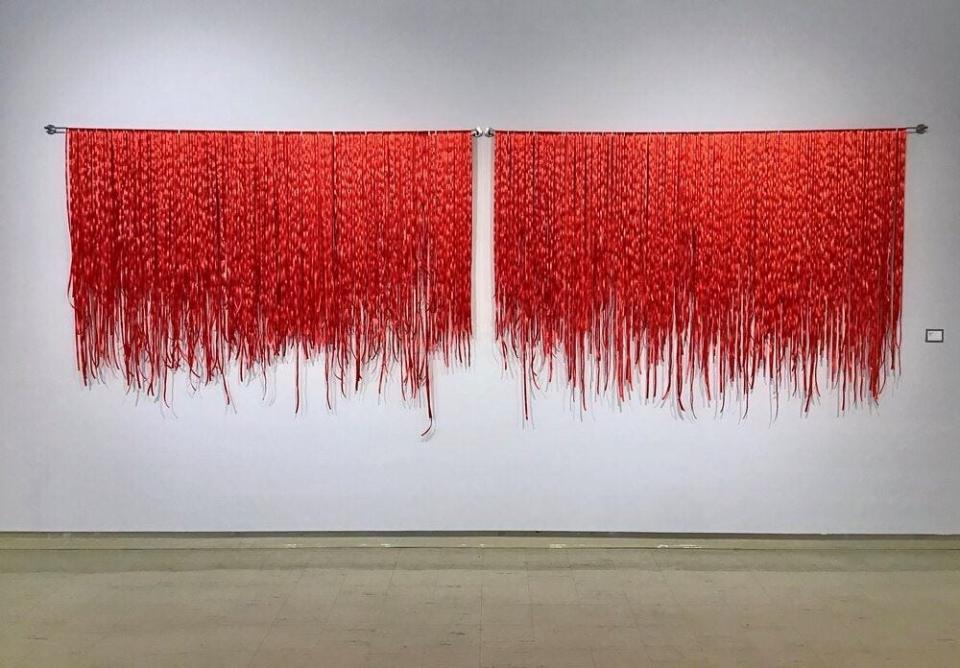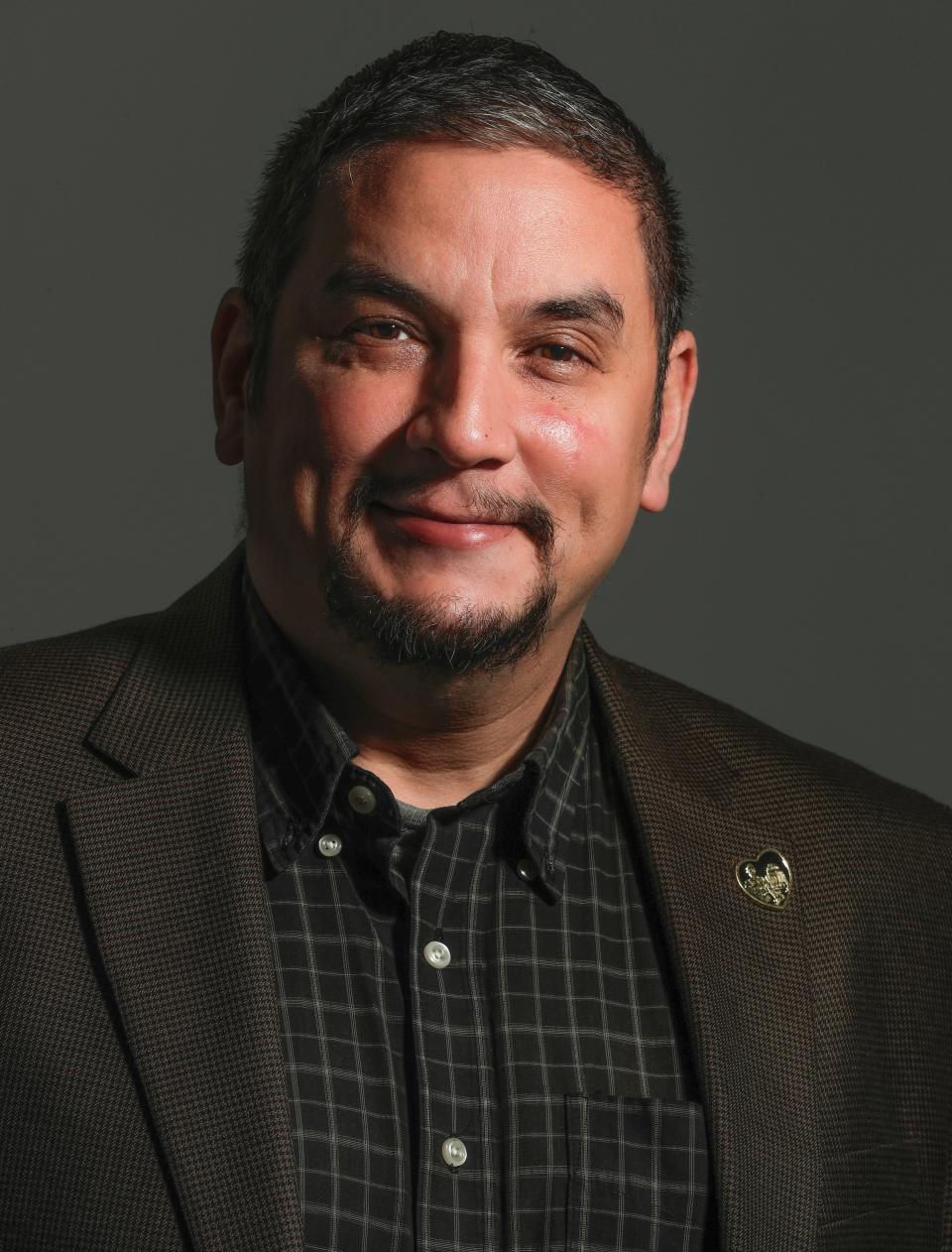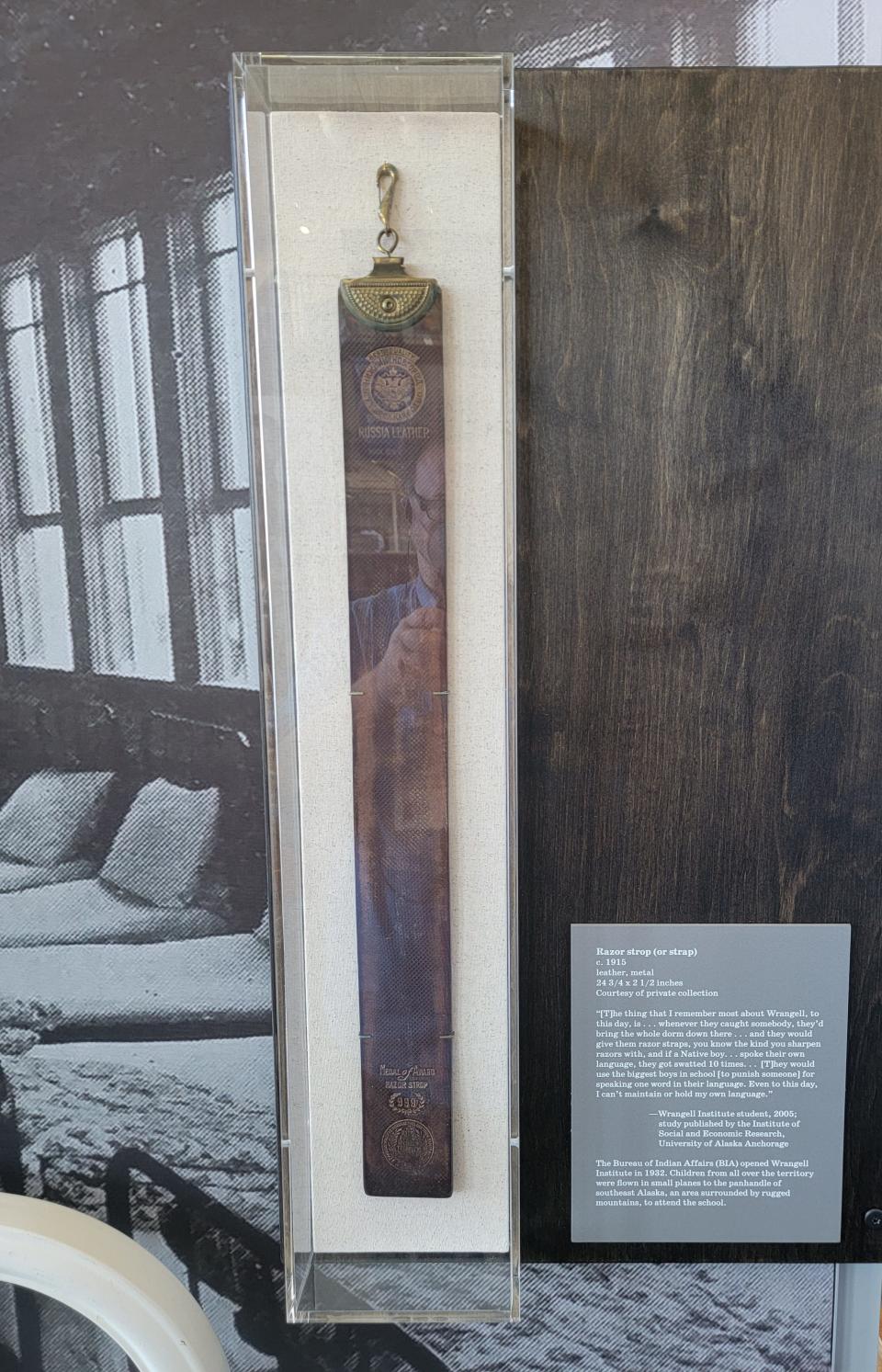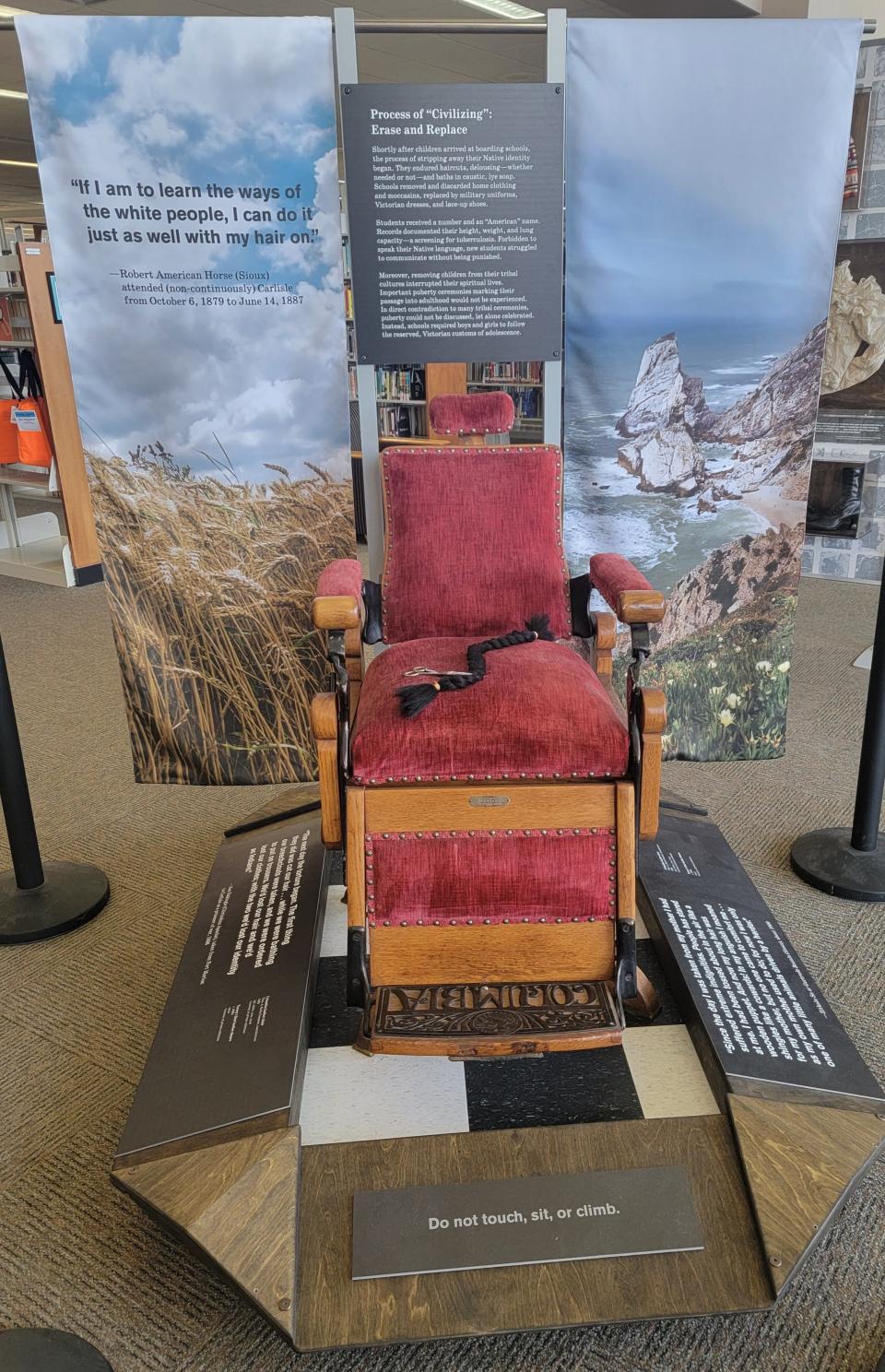Exhibits in this Wisconsin city on Native American boarding schools and violence against Indigenous women are leaving some in tears
MANITOWOC - A pair of deep and highly emotional exhibits involving Indigenous communities are just blocks from one another this summer in Manitowoc and they have some people leaving in tears, organizers said.
The “No More Stolen Sisters” exhibit at the Rahr-West Art Museum highlights the epidemic of violence against Indigenous women and girls. And the “Away From Home” exhibit a short walk away at the Manitowoc Public Library features the history of Indian boarding schools, which forcefully tried to assimilate Indigenous children.
“No More Stolen Sisters” features 49 works of art by 33 artists, including nationally renowned Oneida beadwork artist Karen Ann Hoffman from Stevens Point.
Her red flame urn, done in raised beadwork, is on display in the exhibit. Red has become the color emblematic of the awareness campaign for murdered and missing Indigenous women.

Artist Scott Hill’s painting in the exhibit features an Indigenous woman with a red handprint across her face, another symbol of the campaign.
Research from the National Center for Biotechnology Information shows Indigenous women in the U.S. are three times more likely to be murdered than white women.
More: Wisconsin woman teams with MIT to map violence against Indigenous people in Great Lakes region
“This is a really important issue that affects Wisconsin,” said Diana Bolander, assistant director at Rahr-West. “All of the feedback has been very positive. People have been blown away by the quality of the work.”

Because of the subject matter, a warning sign has been placed at the beginning of the exhibit, stating it may cause trauma to some viewers.
“It can be pretty heavy when they come in,” Bolander said. “People have had emotional reactions. Some were crying. It’s led to a lot of conversation about the role of art in society.”

Sign up for the First Nations Wisconsin newsletter Click here to get all of our Indigenous news coverage right in your inbox
Homicide is the third-leading cause of death for Indigenous girls and teens, according to the federal Centers for Disease Control and Prevention.
A formal count of the murdered and missing Indigenous women and girls in Wisconsin also is not currently available.
However, Indigenous researchers in Wisconsin have so far identified 22 cases of missing and murdered Indigenous people dating back to 1980, with about half of them occurring in the last 10 years and with two of the victims being men.
Wisconsin Attorney General Josh Kaul formed the Murdered and Missing Indigenous Women Task Force in 2020 to investigate the issue, including its causes. The task force aims to have a report finalized by December, which is when Kaul’s term will expire.
An exhibit at Manitowoc Public Library, “Away From Home,” tells the story of another dark time affecting Indigenous communities, the infamous boarding schools.

Hundreds of Native American boarding schools existed in the U.S., part of a federal policy in the late 19th and early 20th centuries to assimilate Native youth into white society.
At least 11 of these boarding schools were in Wisconsin, including Tomah Indian Industrial School, a government-run, off-reservation school about 40 miles east of La Crosse.
Many of the schools were government-funded and based off the model at Carlisle Indian Industrial School, one of the largest boarding schools in the country. Its founder, Richard H. Pratt, famously espoused, “Kill the Indian in him, and save the man.”
One display at the library shows a barber’s chair with a piece of long, braided hair cut off on the chair and a story from a survivor about how disgraceful it was for an Indigenous person to have their hair cut off.

Another display shows handcuffs specially made for children.
“It’s a dark corner of American history,” said Tim Gadzinski, marketing associate for the library. “Unfortunately, a lot of people aren’t aware of it.”
He said a local Indigenous person recently visited the exhibit and left a small pouch of tobacco as an offering.
“The feedback has been overwhelmingly positive,” Gadzinski said. “People have been struck by everything in the exhibit. … It’s been well attended. I’m a little surprised there hasn’t been any negative feedback. There’s a certain segment of the population that doesn’t like to look at history for what it is.”
The closing reception for “No More Stolen Sisters” is from 1 to 4 p.m. July 31 at Rahr-West, 610 N. Eighth St., Manitowoc. Artists Karen Ann Hoffman and Valaria Tatera will provide remarks and light refreshments will be provided. The museum is open 10 a.m.-4 p.m. Tuesdays-Fridays and 11 a.m.-4 p.m. Saturdays-Sundays.
“Away From Home” runs until Aug. 11 at the library, which is at 707 Quay St., Manitowoc. The library is open 9 a.m.-8 p.m. Mondays-Thursdays, 9 a.m.-6 p.m. Fridays, 9 a.m.-3 p.m. Saturdays and noon-4 p.m. Sundays.
Both exhibits are free and open to the public.
Frank Vaisvilas is a Report For America corps member based at the Green Bay Press-Gazette covering Native American issues in Wisconsin. He can be reached at 815-260-2262 or fvaisvilas@gannett.com, or on Twitter at @vaisvilas_frank. Please consider supporting journalism that informs our democracy with a tax-deductible gift to this reporting effort at GreenBayPressGazette.com/RFA.
This article originally appeared on Green Bay Press-Gazette: Violence against Native Americans explored in Manitowoc exhibits

